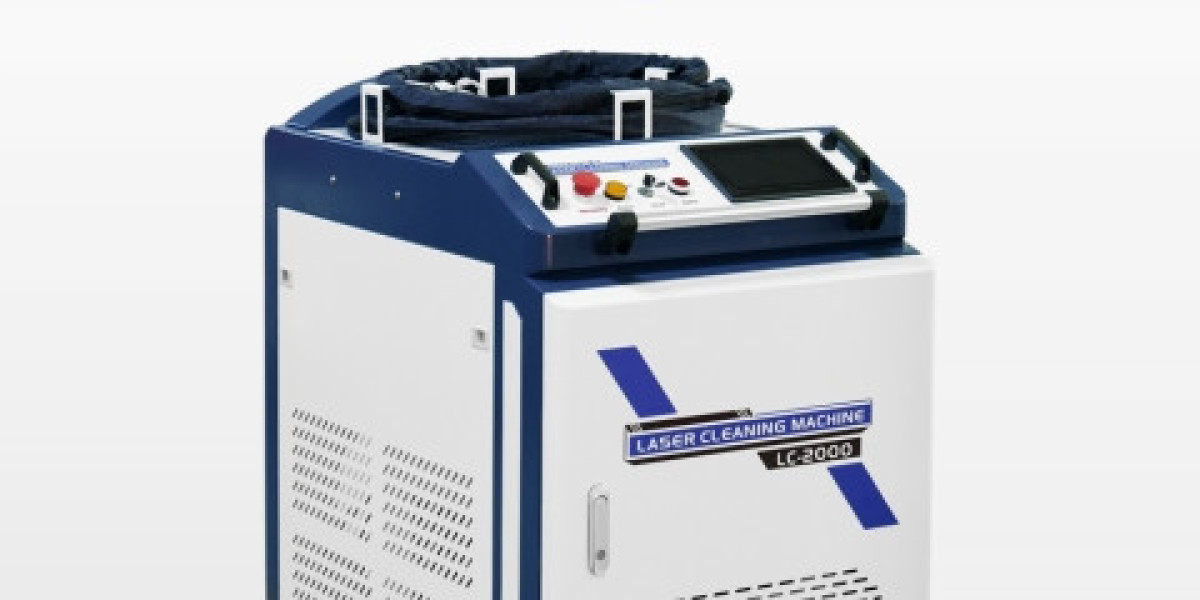This cutting-edge tool is not just a trend—it’s becoming a critical part of industrial cleaning strategies for companies that demand consistency, safety, and precision. But the real question is: why does a laser cleaning machine outperform traditional cleaning methods in such demanding environments? To answer that, let’s explore the deep mechanics behind laser cleaning, how it integrates into modern workflows, and why it's being prioritized in sectors ranging from aerospace to automotive manufacturing.
What Is a Laser Cleaning Machine?
At its core, a laser cleaning machine is a highly engineered system that uses laser beams—typically pulsed fiber lasers—to remove unwanted substances from surfaces without damaging the base material. It’s a contactless process that relies on the principles of laser ablation. When the laser beam hits the surface, it delivers a short burst of high-energy light that heats, vaporizes, or lifts away the contaminants from the substrate.
The result is a clean, residue-free surface ready for further processing like welding, coating, or assembly. The process is dry, eco-friendly, and easily programmable, making it compatible with automated production lines and robotic systems.
Understanding Laser-Material Interaction
To appreciate why the laser cleaning machine stands out, you need to understand how lasers interact with materials on a microscopic level. When the laser beam contacts a dirty or oxidized metal surface, the contaminants absorb more energy than the metal itself. This difference in absorption allows the machine to vaporize or eject the dirt layer while keeping the underlying metal intact.
For example, in rust removal, the laser beam is set to a wavelength and intensity that aggressively targets iron oxide without damaging the steel beneath it. This level of selectivity is impossible to achieve with manual grinding or chemical baths, where the entire surface is treated indiscriminately.
Seamless Integration with Industry Standards
Modern industries cannot afford inconsistencies. Whether it’s aerospace requiring ultra-clean components for assembly or the automotive industry needing rust-free parts for accurate welding, the laser cleaning machine fits the bill perfectly.
Thanks to programmable settings and real-time control over laser parameters such as pulse duration, power, and scanning speed, operators can customize the cleaning process for specific materials and coatings. This makes it easier to meet industry-specific quality assurance standards, even in high-volume production environments.
Industrial Use Cases Where Laser Cleaning Machines Excel
Let’s explore where the laser cleaning machine truly proves its worth:
1. Pre-Weld Cleaning in Automotive and Aerospace
Before metals are welded, their surfaces must be free of oils, oxides, or protective coatings. Manual or chemical cleaning can leave residues or create surface inconsistencies. A laser cleaning machine, on the other hand, ensures uniform preparation, improving the integrity and strength of the welds.
2. Rust Removal in Shipbuilding and Heavy Machinery
Ships, trains, and construction equipment are often exposed to moisture, leading to corrosion. Traditional rust removal techniques involve sandblasting, which can damage the metal and produce harmful dust. Laser rust removal is safer, more precise, and minimizes the risk of degrading the material over time.
3. Paint Removal in Aerospace and Defense
Aircraft maintenance often requires paint removal for inspections or repainting. Paint stripping chemicals can be hazardous, and abrasive methods are labor-intensive. A laser cleaning machine allows technicians to remove specific layers of paint cleanly, without harming sensitive components.
4. Cultural Heritage Restoration
Laser cleaning isn’t confined to heavy industry. Museums and conservation labs use compact laser cleaning machines to restore historical metal objects, sculptures, and artifacts. It offers an unmatched ability to clean delicate surfaces without any abrasive contact.
Safety and Environmental Impact
Many conventional cleaning processes involve volatile chemicals or create airborne contaminants, which pose risks to workers and the environment. A laser cleaning machine eliminates the need for hazardous materials, reduces waste, and provides a cleaner, safer work environment.
The systems are often equipped with fume extraction units that capture particles and gases during the cleaning process. This makes them particularly suitable for indoor use, even in cleanroom environments where contamination is strictly controlled.
Return on Investment and Cost Efficiency
While the upfront cost of a laser cleaning machine can be higher compared to sandblasting or chemical cleaning setups, the long-term savings are significant. Here’s why:
Low Consumable Use: No need for abrasive media, solvents, or disposable materials.
Minimal Downtime: No drying time or cleanup is required, increasing production efficiency.
Durability: Machines are designed to last for years with minimal maintenance.
Automation: Integrates easily with robotic arms or conveyor systems, reducing labor costs.
Industries that operate under high throughput and tight margins benefit greatly from these efficiencies. Over time, the machine pays for itself through reduced operating costs and enhanced product quality.
Technological Advancements in Laser Cleaning Machines
Modern laser cleaning machines are more compact, user-friendly, and robust than ever before. Features like touchscreen controls, preset material profiles, and AI-based pattern recognition (avoiding technical terms here) make operation intuitive and precise. Many systems are now portable, enabling field use for on-site repairs or cleaning operations in remote locations.
For example, handheld laser cleaning units can be used in railway yards, oil rigs, or construction sites without needing massive infrastructure. Their mobility and ease of deployment open new possibilities for industrial cleaning in challenging environments.
Maintenance and Operational Care
While laser systems are low maintenance, they still require proper care to ensure consistent performance:
Optics Cleaning: The laser lens and protective glass must be kept clean to avoid beam distortion.
Cooling System Checks: Whether air or water-cooled, maintaining optimal temperatures extends the machine's lifespan.
Software Updates: Keeping the firmware current ensures compatibility with the latest materials and safety standards.
A well-maintained laser cleaning machine can run for thousands of hours with minimal intervention. This longevity adds to the appeal for industries that want to avoid frequent downtimes or recurring equipment upgrades.
Market Growth and Industry Trends
The demand for laser cleaning machines is growing rapidly across the globe. As industries shift toward sustainable and high-precision technologies, laser cleaning is emerging as a preferred solution.
According to recent market data, sectors like automotive manufacturing, aerospace maintenance, and electronics fabrication are investing heavily in this technology. Even government and military institutions are adopting laser-based cleaning to meet strict compliance and security standards.
This growing interest reflects a deeper industrial transformation, where precision, efficiency, and sustainability are becoming non-negotiable.
Final Thoughts
The rise of the laser cleaning machine isn’t just a matter of convenience—it’s about aligning with the future of industrial processes. Whether it’s about reducing operational hazards, improving cleaning precision, or accelerating production timelines, laser cleaning offers unmatched advantages that traditional methods simply can’t replicate.
What was once seen as a futuristic technology is now a practical and powerful tool for companies that value performance, cleanliness, and long-term reliability. As industries continue to modernize, the question isn't whether you should adopt a laser cleaning machine—it's how soon you can integrate one into your workflow to stay competitive.








